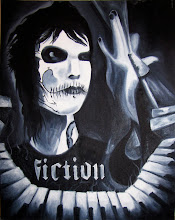On Monday 26th of October, I filmed the majority of my video at my house. Nathan came round and we filmed the few shots I needed after I helped him with his. I got the shots of me playing my Xbox then dying. I got the same shots with Nathan, I also got shots of the Xbox turning on and then loading the game before I set up a match.
All I need to film now is the in-game footage I can get using the file share system on Halo 3.
__________________________________________________________
Since filming 2 weeks ago, I have begun post production but still need to create and download the in-game footage from Halo 3 because without it the story doesn't make sense.
__________________________________________________________
While trying to create the in-game footage needed for my Experimental Video, the connection for Xbox Live cut out so i couldn't join any games. In order for me to get any in-game footage I needed, I had to go into 'Custom Games' and create it myself with me moving both characters with two different controllers. After uploading the footage to Bungie.net (where I would render and download it) I found out I couldn't download it because my subscription for Bungie Pro had ended and I would have to pay and wait two days until I could access the footage. Luckily Nathan had some spare footage from his Video and let me use it.
__________________________________________________________
The next day, I continued with my editing and finished everything. I exported the film into quicktime and took a still image and had it burnt onto a DVD.
I don't think this project was as good as I was hoping because I didn't get the planned amount of in-game footage and this caused me to be behind everyone else so I rushed the ending and forgot to add in credits.
If I got the chance to do this again I would have got more in-game footage and taken care with the transitions and cuts. I also would have liked to check the audio on 'Garage Band' to ensure it wasn't so quiet.



